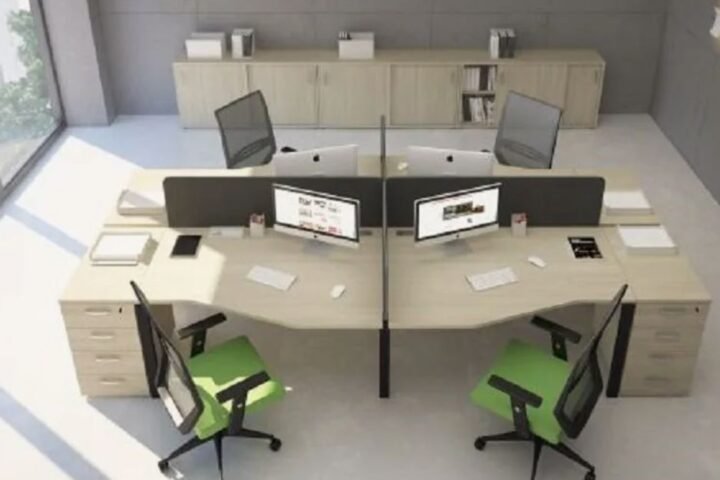When planning an office space, one of the most important pieces of furniture to consider is the conference table. The size and dimensions of the conference table play a crucial role in creating an environment that promotes productivity, comfort, and effective communication. Understanding conference table dimensions is essential for selecting a table that fits your meeting room, accommodates the right number of people, and supports the workflow during meetings. This blog dives deep into the significance of conference table dimensions, how to choose the right size, and the factors you need to consider to maximize your office’s functionality.
Why Conference Table Dimensions Matter
The dimensions of a conference table are not merely about aesthetics; they are vital to the practical use of the meeting space. An appropriately sized table ensures that every participant has enough space to work comfortably, place laptops or notebooks, and engage without feeling cramped. If a conference table is too small, it can lead to discomfort, reduced productivity, and even strained communication. Conversely, a table that is too large may make conversations difficult, as participants can feel disconnected across a vast surface. Therefore, knowing the standard conference table dimensions and how they relate to your room size and intended use is fundamental to creating an ideal meeting environment.
Standard Conference Table Dimensions and Shapes
Conference tables come in various shapes and sizes, and each shape influences the dimensions you need to consider. The most common shapes include rectangular, oval, round, and boat-shaped tables. Rectangular tables are the most popular because they fit easily into rectangular rooms and provide clear sightlines. The standard rectangular conference table dimensions usually range from 72 inches to 240 inches in length and 36 to 48 inches in width. This size range allows flexibility depending on the number of attendees.
Round conference tables are perfect for fostering collaboration, with typical diameters ranging from 42 inches to 72 inches or more. These tables allow for better eye contact and encourage discussion but may require a larger room to accommodate their shape. Oval and boat-shaped tables combine the benefits of rectangular and round tables, offering a more elegant look while maintaining good visibility and reachability. Knowing these conference table dimensions helps you pick the right table to match your room’s layout and the dynamics of your meetings.
How to Choose the Right Conference Table Size
Choosing the correct conference table size depends on several factors. First, consider the size of your conference room. You should leave enough space around the table for chairs and comfortable movement. Typically, a minimum of 36 inches of clearance around the table is recommended to allow people to walk around easily and pull chairs in and out without obstruction. This clearance also helps in maintaining a spacious and welcoming feel in the room.
Next, think about how many people will regularly use the table. The general rule of thumb is to allocate about 24 to 30 inches of width per person to provide enough elbow room. So, for instance, if you expect to host eight participants regularly, your table should be at least 192 to 240 inches in perimeter length, distributed evenly on all sides depending on the table shape. These calculations are crucial for ensuring every attendee has enough space to work comfortably.
Finally, consider the table’s depth or width. Most conference tables range between 36 to 48 inches wide. Wider tables are beneficial for larger rooms and when participants need to spread out documents or electronic devices. However, very wide tables can make it hard for people to interact face-to-face if the room is small, so balancing width with room size is essential when evaluating conference table dimensions.
Additional Functional Considerations for Conference Tables
Apart from the basic dimensions, functional features influence the usability of your conference table. For example, integrated cable management systems are essential for modern offices to handle power cords and data cables discreetly, preventing clutter on the tabletop. This feature is especially important for larger tables that accommodate many participants with laptops or conferencing devices.
Moreover, the height of the table matters for comfort during long meetings. Standard conference table height is usually around 29 to 30 inches, which is ergonomic for most chairs and users. Adjustable height tables are also available and can be helpful if your meetings require standing collaboration or cater to people of different heights.
The materials and finish of the conference table may not directly relate to its dimensions but impact the perceived size and ambiance of the room. Lighter finishes can make a large table appear less bulky, while darker materials may give a more formal and commanding presence. Considering these factors helps to harmonize the table with the rest of your office furniture and interior design.
How to Measure Your Room for the Perfect Table
Before purchasing a conference table, precise measurement of your conference room is crucial. Start by measuring the length and width of the room, taking note of any doors, windows, or built-in fixtures that could impact furniture placement. After determining your room dimensions, subtract the recommended clearance space (minimum 36 inches on all sides) from the room’s length and width to find the maximum allowable table size.
For example, if your conference room is 20 feet long and 15 feet wide, subtracting 6 feet from length and width for clearance leaves a maximum table size of roughly 14 by 9 feet (168 inches by 108 inches). This measurement gives you the upper limit for the table dimensions without overcrowding the space.
It’s also helpful to sketch a floor plan or use online room planning tools to visualize how the table will fit, including chair placement and movement paths. This planning ensures you choose the right conference table dimensions that optimize both space and function.
Custom Conference Tables for Unique Spaces
Sometimes standard sizes do not meet the unique needs of a business, especially in rooms with irregular shapes or unusual dimensions. Custom conference tables offer a solution, allowing you to specify exact length, width, and shape to perfectly suit your office layout. While custom options may be more expensive, the investment ensures that the table maximizes the available space and meets the ergonomic and aesthetic needs of your meetings.
When opting for custom tables, provide the manufacturer with detailed measurements and information about how the table will be used, including the number of participants, required cable management, and material preferences. This approach guarantees a functional and attractive centerpiece for your meeting room.
Conclusion
Selecting the right conference table involves more than just picking a stylish piece of furniture; it requires careful consideration of conference table dimensions to ensure comfort, functionality, and effective communication in your office. By understanding the standard sizes, shapes, and clearance requirements, you can make an informed decision that enhances your workspace and supports productive meetings. Remember to measure your conference room accurately, consider how many people will be seated, and think about the additional features that can improve usability. For high-quality options that combine style and practicality, office furniture offers a range of conference tables designed to meet diverse business needs and room sizes. Making the right choice in table dimensions will transform your meeting environment and leave a lasting impression on clients and employees alike.











